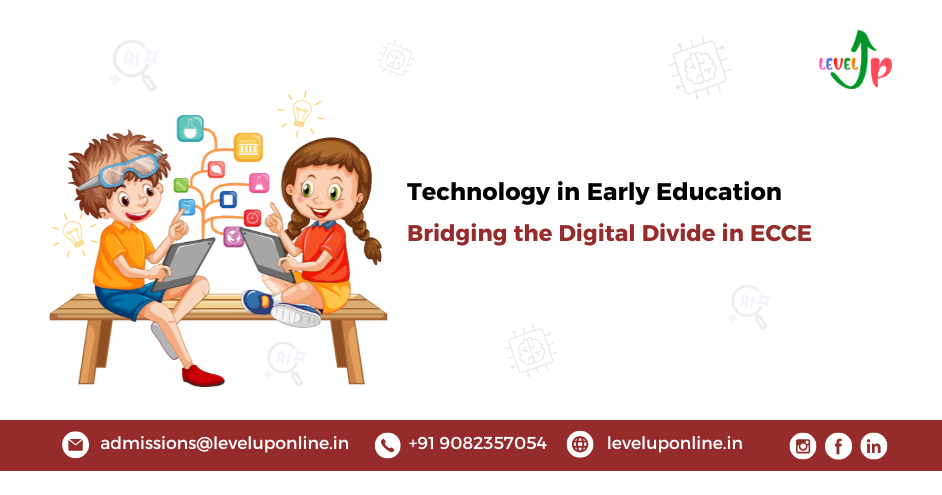Introduction to ECCE and the Tech Landscape
The term ECCE (Early Childhood Care and Education) is gaining momentum—and so is the conversation around tech in ECCE. But here’s the thing: while some classrooms are exploring AI-powered apps and smart boards, many others still lack basic tools like a stable internet connection or age-appropriate digital content.
Tech in ECCE is more than just a trend—it’s a game-changer. But if only a privileged few get access, we’re not just educating unevenly—we’re deepening the learning divide. This blog dives into how equitable your ECCE classroom tech really is, and what you can do to level the playing field.
Why ECCE Needs a Digital Revolution
The Role of Technology in Education and Early Childhood Development
From phonics games to AI-driven storytelling, tech in ECCE helps children build foundational skills like literacy, numeracy, and social-emotional awareness. When done right, it becomes a support system—not a distraction—for teachers and students alike.
The Digital Divide in ECCE: What It Really Looks Like
Access vs. Effective Use
Having a tablet doesn’t mean much if it’s not used meaningfully. In many ECCE classrooms, tech in ECCE is underutilized due to lack of teacher training or unsuitable content. Real tech equity means both access and effective integration.
Urban vs. Rural Classroom Tech Gaps
City preschools often boast smart classrooms. Meanwhile, in rural areas, teachers may rely on handmade flashcards. This uneven access to tech in ECCE directly affects children’s learning experiences.
Lesser-Known Barriers to Tech Equity in ECCE
Digital Literacy of Educators
An underrated barrier to effective techonology in ECCE is the lack of digital training for teachers. Devices sit unused or misused when educators aren’t confident with tech tools.
Infrastructure Disparities
No electricity, poor network, or even lack of classroom space—these aren’t just rural problems. Many ECCE centers, even in cities, struggle with infrastructure to support learning.
Language and Local Content Limitations
One-size-fits-all content won’t work. Tech in ECCE must include resources in local languages and reflect cultural contexts for it to truly engage young learners.
Real Stories from Classrooms Across the Globe
A Preschool in Mumbai vs. a Rural Anganwadi
In Mumbai, ECCE classrooms use tablets for language learning. In contrast, in parts of Bihar or Odisha, a teacher with chalk and a handmade board improvises every lesson. The gap in tech in ECCE is clear—and growing.
Teachers Making Do with Limited Tech
Take the example of a Kerala teacher who turned a basic smartphone into a storytelling tool during lockdowns—proving that even limited tech in ECCE can make a big difference with creativity and effort.
Bridging the Gap: Practical Strategies for Inclusive Tech Use
Affordable EdTech Tools for ECCE
Many platforms in India are making tech in ECCE accessible. The tools are free, offline-friendly, and highly effective for diverse learners.
Government and NGO Interventions
Initiatives like DIKSHA or PM eVidya aim to promote e-learning, but awareness and implementation at the grassroots level need to improve. NGOs can bridge this last-mile delivery.
Training Programs for ECCE Educators
One of the best ways to expand techology is through teacher training. When educators are empowered, they become innovators—using available tools creatively to benefit learners.
The Role of Parents in Digital Equity
Parental Engagement in Tech Learning
Parents often see screens as distractions. But when guided, they can become partners in promoting tech in ECCE, using digital learning games at home to reinforce school concepts.
Screen Time vs. Active Play Balance
Balance is the secret sauce. A good techology in ECCE plan ensures kids move, play, and interact while also gaining digital exposure in moderation.
The Future of ECCE with Equitable Tech
AI, AR/VR and Personalised Learning for Tiny Tots
Imagine kids exploring virtual forests while learning about animals, or AI telling them bedtime stories based on their mood. The future of is immersive—but we must ensure all children can access it.
The Role of Policy and Investment
Government policies must focus on tech in ECCE as a necessity, not a luxury. Investments in infrastructure, teacher training, and local content development are non-negotiables.
Conclusion
The digital divide in ECCE isn’t about fancy gadgets—it’s about meaningful learning experiences that every child deserves. Tech in ECCE can be the bridge or the barrier. Which one it becomes depends on the choices we make today.
Let’s make tech work for every child—not just the few who can afford it.


